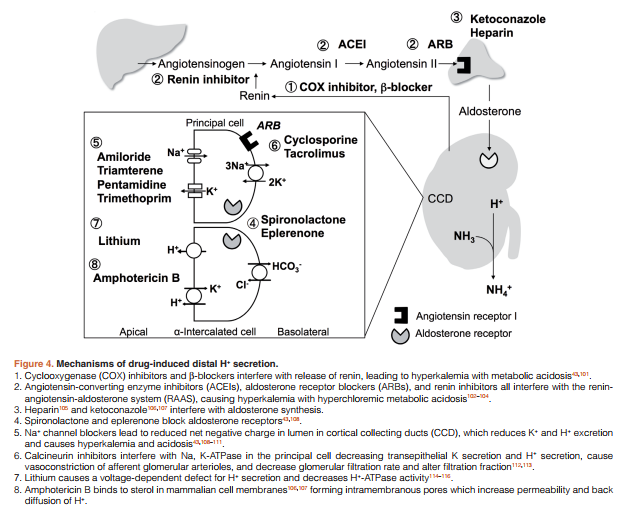For an excellent brief review of acid-base disorders see Acid-Base Interpretation
Updated: Oct 30, 2015 from emedicine.medscape.com
In addition to d-lactate, the D in GOLDMARK * [a mnemonic for the causes of anion gap metabolic acidosis] can also stand for drugs as a cause of metabolic acidosis. * This is the link to Best Case Ever 56 Anion Gap Metabolic Acidosis [link is to the podcast and shownotes] from Emergency Medicine Cases.
An excellent article that discusses drugs causing metabolic acidosis is Drug-Induced Metabolic Acidosis [PubMed Abstract] [Full Text HTML] [Full Text PDF]. F1000Res. 2015 Dec 16;4. pii: F1000 Faculty Rev-1460. doi: 10.12688/f1000research.7006.1. eCollection 2015.
What follows are the figures from the above article [See article text for details]:
Abstract
Metabolic acidosis could emerge from diseases disrupting acid-base equilibrium or from drugs that induce similar derangements. . . . It is imperative that clinicians not only are fully aware of the list of drugs that may lead to metabolic acidosis but also understand the underlying pathogenic mechanisms. In this review, we categorized drug-induced metabolic acidosis in terms of pathophysiological mechanisms, as well as individual drugs’ characteristics.
Drug-induced metabolic acidosis is often mild, but in rare cases it can be severe or even fatal. Not only should physicians be keenly aware of this potential iatrogenic complication but they should also be fully engaged in understanding the pathophysiological mechanisms. Metabolic acidosis resulting from drugs and/or ingestion of toxic chemicals can be grouped into four general categories (Figure 2):
1. Drugs as exogenous acid loads
2. Drugs leading to loss of bicarbonate in the gastrointestinal
(GI) tract or kidney
3. Drugs causing increased endogenous acid production
4. Drugs that decrease renal acid excretion









